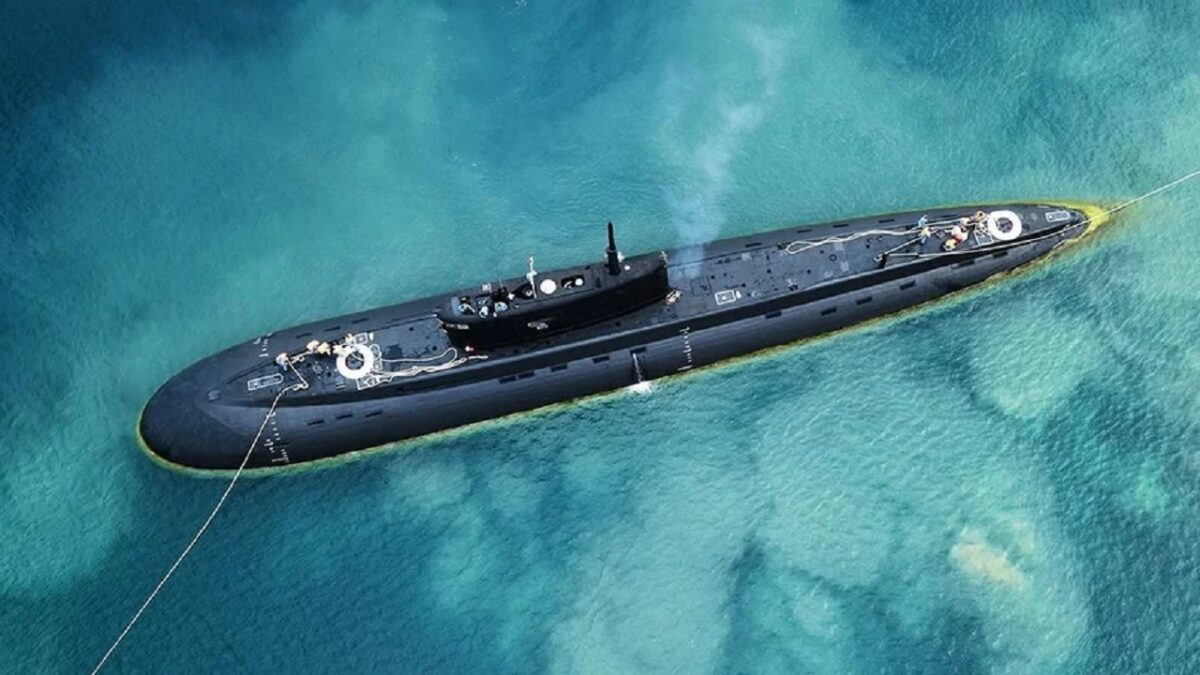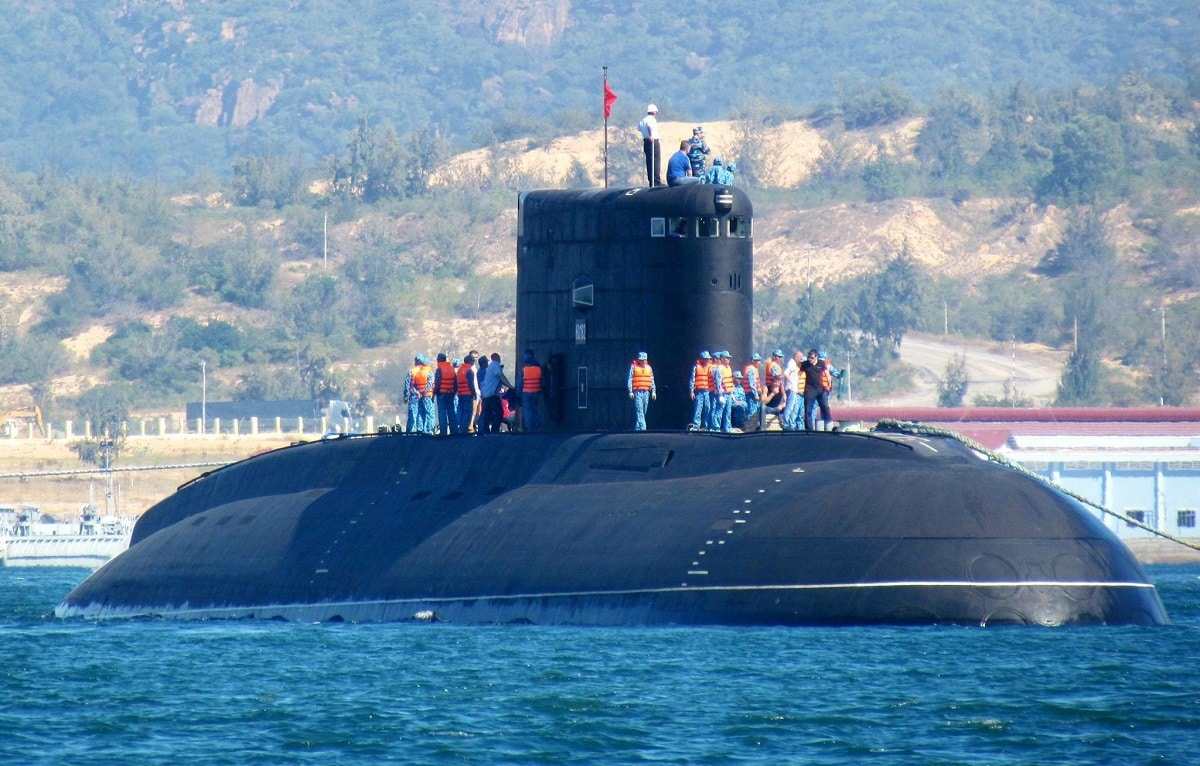The Islamic Republic of Iran’s three Russian-built Kilo-class submarines serve as the regime’s first line of defense off the coast of Iran.
The 3,000-ton diesel-electric Kilos are the Iranian Navy’s largest and most sophisticated submarines. Currently positioned at Bandar Abbas in the Strait of Hormuz, at least two Kilos are operational at any given time. Iran’s submarine fleet is comprised of 26 different vessels, but the three Kilos stand out as the Iranian Navy’s favorite underwater defenders.
(Subscribe to Our YouTube Channel Here)
Soviet-Era Sub
The Kilo-class entered service in the Soviet Union in the early 1980s. Originally designed for anti-surface warfare (aSuW) in coastal waters and anti-submarine warfare (ASW), the boat is capable of detecting an enemy submarine at a “range three to four times greater than it can be detected itself.” The quiet vessel has been exported to various countries, including China and India.
Iran acquired the three Kilo-class platforms in the 1990s, just a few years after the establishment of the Islamic Revolutionary Guard Corps Navy (IRGCN) during the Iran-Iraq War. The submarines are 74 meters long, can carry a total of 18 torpedoes, and can remain submerged for several days at a time. The submarines use a combination of diesel and electrical power for propulsion, which reduces the burden of having to resurface the platforms to charge and increases underwater longevity. Additionally, the Kilos require a depth of at least 164 feet. This limitation prevents the submarines from being operational in nearly two-thirds of the Gulf.
The submarines’ anechoic tiles, or large synthetic tiles containing tiny voids, make tracking the Kilo-class extremely challenging. The Kilo-class was designed to be silent.
Dubbed the “Black Hole” by the U.S. Navy, the submarine’s shape and lack of vibrations due to intentional design make it even harder to locate.
Gulf Service
The shallowness of the Strait of Hormuz doesn’t help. According to experts, “The water (of the Strait) provides noisy background conditions that help cover up the sound of a submarine, but the shallow waters make the submarine more likely to be visually identified from the air or surface of the water. The confined waters and strong currents of the Gulf make the Strait of Hormuz an extremely hazardous place for even experienced submariners.” Therefore, the Kilo-class operating outside of the Gulf would be much more dangerous.
In January 2021, photos depicting the three Kilo-class submarines out of service surfaced. For nearly a month, the Iranian Navy’s favorite underwater vessels were out of commission, which is very atypical. Navies usually rotate maintenance durations of their submarines to ensure at least one vessel remains in service at all times. While the rationale behind this move remains unclear, this could signal a change in strategy for Iran’s Navy. Since the Kilo-class displaces nearly 2,5000 tons when surfaced, they are very difficult to move by land. It is unlikely the Navy would move all three submarines to land unless a larger serviceability issue was evident.
Iran has recently focused on the modernization of its historically small Navy. The regime could be in the process of developing its own domestic-made improvements for its Kilo-class fleet or perhaps seeking technology abroad.

Kilo-Class Submarine. Image Credit: Creative Commons.

Kilo-Class Submarine.

Pictured is a Kilo-Class Russian Submarine in the English Channel. The image was taken from Royal Navy Wildcat HMA2 Helicopter of 815 Naval Air Squadron. Kilo class is the NATO reporting name for the diesel-electric attack submarine.

Kilo-class Submarine. Image Credit: Creative Commons.
Maya Carlin is a Middle East Defense Editor with 19FortyFive. She is also an analyst with the Center for Security Policy and a former Anna Sobol Levy Fellow at IDC Herzliya in Israel. She has by-lines in many publications, including The National Interest, Jerusalem Post, and Times of Israel.

